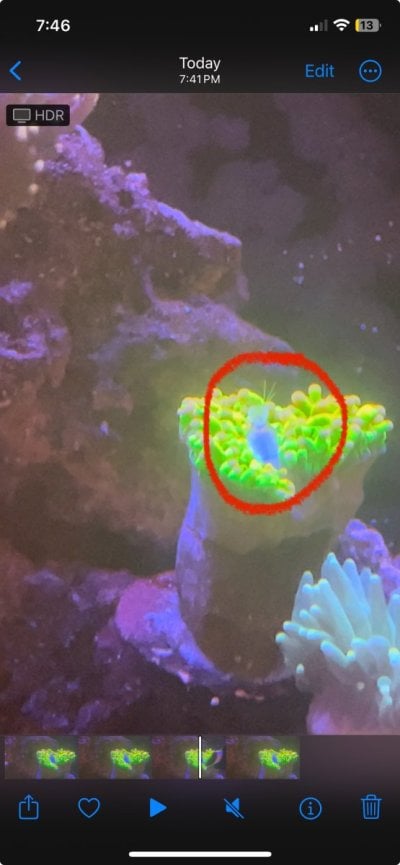New to the hobby, started the tank at the end of may. HOB 2 very cheap powerheads live rock and live sand. so far just 2 clowns and clean up crew. Did not quarantine the initial inhabitants but everyone so far is happy and healthy. I want to set up a quarantine before adding anything else. I just got a light so I am thinking I should add a soft coral next.
My first questions are about a QT tank. I have a 10 gallon tank with lid and a submersible filter with a little spray bar the water comes out of. I'm not sure if the filter I have would be appropriate for QT purposes. It seems it also might depend on my QT procedure which seems to vary from person to person. My thoughts would be to hopefully use the tank to QT coral and fish but I would not QT both together at the same time. I am curious if I could just get a bulb for the t5 light that is on the hood to keep the soft coral alive while in QT? Maybe its more cost effective to just buy a cheap led?
also wondering if I can put my QT next to the display tank or if there is potential for contamination from the close proximity of the tanks?
I also bought a light so I can start getting some Soft corals. I got a glowrium smart reef coral light. Reviews seemed good and it has app control which I liked, it went on sale cheap for prime day. BRS says to do a 1-8-1 so I am going to do that. I currently have just one of those clip on shop worklights with a LED screw on bulb that honestly probably runs 12 hours a day right now. any tips when it comes to the new light? I watched a video and it said to just set the settings and leave it for a while before messing with it again. I am guessing I should tread on the side of less light so the corals don't bleach out. Is there anything I should watch out for like algae growth as a red flag/sign I have too much light?
I have been using the non reef salt in the tank so far. Should I just switch to reef salt at this point and save what is left of the normal salt for my fish QT? anything to be wary of here?
Another wrench in the gears is I am going to be buying a house and likely moving in 3-4 months. I was thinking maybe I could get 1 cheap soft coral and QT it before the move happens. I am likely moving an hour or less away from my current location so it seems like moving the tank wouldn't be too big a deal. But appreciate any advice maybe I need a reality check. I've moved freshwater tanks before I don't think this would be all that different.
I am going to do some searching around and try and learn some more, this hobby is basically like being a scientist so there is lots to learn.

My first questions are about a QT tank. I have a 10 gallon tank with lid and a submersible filter with a little spray bar the water comes out of. I'm not sure if the filter I have would be appropriate for QT purposes. It seems it also might depend on my QT procedure which seems to vary from person to person. My thoughts would be to hopefully use the tank to QT coral and fish but I would not QT both together at the same time. I am curious if I could just get a bulb for the t5 light that is on the hood to keep the soft coral alive while in QT? Maybe its more cost effective to just buy a cheap led?
also wondering if I can put my QT next to the display tank or if there is potential for contamination from the close proximity of the tanks?
I also bought a light so I can start getting some Soft corals. I got a glowrium smart reef coral light. Reviews seemed good and it has app control which I liked, it went on sale cheap for prime day. BRS says to do a 1-8-1 so I am going to do that. I currently have just one of those clip on shop worklights with a LED screw on bulb that honestly probably runs 12 hours a day right now. any tips when it comes to the new light? I watched a video and it said to just set the settings and leave it for a while before messing with it again. I am guessing I should tread on the side of less light so the corals don't bleach out. Is there anything I should watch out for like algae growth as a red flag/sign I have too much light?
I have been using the non reef salt in the tank so far. Should I just switch to reef salt at this point and save what is left of the normal salt for my fish QT? anything to be wary of here?
Another wrench in the gears is I am going to be buying a house and likely moving in 3-4 months. I was thinking maybe I could get 1 cheap soft coral and QT it before the move happens. I am likely moving an hour or less away from my current location so it seems like moving the tank wouldn't be too big a deal. But appreciate any advice maybe I need a reality check. I've moved freshwater tanks before I don't think this would be all that different.
I am going to do some searching around and try and learn some more, this hobby is basically like being a scientist so there is lots to learn.


















